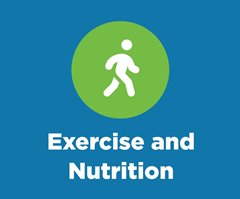Cardiology: Reduce Your Risk of Heart Complications
What steps can you take to reduce you risk of heart complications?
You can reduce your risk of having a heart attack—even if you already have coronary heart disease (CHD) or have had a previous heart attack. The key is to take steps to prevent or control your heart disease risk factors.
Stop smoking
- Cigarette smoking greatly increases the risk of fatal and nonfatal heart attacks in both men and women. It also increases the risk of a second heart attack among survivors. Women who smoke and use oral contraceptives have an even greater risk than smoking alone.
- The good news is that quitting smoking greatly reduces the risk of heart attack. One year after quitting, the risk drop to about one-half that of current smokers and gradually returns to normal in persons without heart disease. Even among persons with heart disease, the risk also drops sharply one year after quitting smoking and it continues to decline over time but the risk does not return to normal.
An exploration of the different resources Lee Health offers the Southwest Florida community to help smokers quit their habit and achieve a better quality of life.
Lower high blood pressure
- High blood pressure makes the heart work harder. It increases the risk of developing heart disease, as well as kidney disease and stroke.
- Also called hypertension, it usually has no symptoms. Once developed, it typically lasts a lifetime.
- Blood pressure is recorded as two numbers–the systolic pressure (as the heart beats) over the diastolic pressure (as the heart relaxes). For example, a measurement would be written as 120/80 mm Hg (millimeters of mercury).
- Normal blood pressure is less than 130 mm Hg systolic and less than 85 mm Hg diastolic. An optimal blood pressure is less than 120 mm Hg systolic and less than 80 mm Hg diastolic. A consistent blood pressure reading of 140/90 mm Hg or higher is considered high blood pressure. If the systolic and diastolic pressures fall into different categories, the higher category is used to classify blood pressure status.
-
High Blood Pressure
One of the most common disorders can be effectively treated with regular doctor visits, medication, and lifestyle changes.
Reduce high blood cholesterol
- A healthy weight is crucial for a long, healthy life. In 1999, almost 108 million-or 61 percent of-adults in the United States were overweight or obese. Being overweight or obese increases your risk of heart attack. And, it increases your risk of developing high blood cholesterol, high blood pressure, and diabetes-each of which also increases your chance of having a heart attack. If you are overweight, even a small weight loss-just 10 percent of your current weight-will help to lower your risk of developing those diseases.
- Two of the measures that assess whether or not a person is overweight are body mass index (BMI) and waist circumference. BMI is a measure of weight relative to height. To check your BMI, choose this online calculator. Waist circumference measures abdominal fat. The risk for developing heart and other diseases increases with a waist measurement of more than 40 inches in men and more than 35 inches in women.
-
High Cholesterol
Learn more about how Lee Health treats high cholesterol to help you avoid heart disease.
Aim for a healthy weight
- Reaching and maintaining a healthy weight is important for overall health and can help you prevent and control many diseases and conditions. If you are overweight or obese, you are at higher risk of developing serious health problems, including heart disease, high blood pressure, type 2 diabetes, gallstones, breathing problems, and certain cancers. That is why maintaining a healthy weight is so important: It helps you lower your risk for developing these problems, helps you feel good about yourself, and gives you more energy to enjoy life.
-
Medical Weight Management
Teaching you how to properly fuel and nourish your body by implementing meaningful lifestyle changes
Be physically active each day
- Being physically active reduces the risk of heart-related problems, including heart attack. Physical activity can improve cholesterol levels, help control high blood pressure and diabetes, and manage weight. It also increases physical fitness, promotes psychological well-being and self-esteem, and reduces depression and anxiety.
- Those who have already had a heart attack also benefit greatly from being physically active. Many hospitals have a cardiac (or heart) rehabilitation program. A health care provider can offer advice about a suitable program.
- To protect your heart, you only need to do 30 minutes of a moderate-intensity activity on most and, preferably, all days of the week. If 30 minutes is too much at one time, you can break it up into periods of at least 10 minutes each.
- If you have coronary heart disease, check with you health care provider before starting a physical activity program. This is especially important if you are over age 55, have been inactive, or have diabetes or another medical problem. Your health care provider can give you advice on how rigorous the exercise should be.
Lee Health's experts give you the best tips on the small first steps you can take to become more active.
Manage diabetes
- Diabetes mellitus affects more than 16 million Americans. It damages blood vessels, including the coronary arteries of the heart. Up to 75 percent of those with diabetes develop heart and blood vessel diseases. Diabetes also can lead to stroke, kidney failure, and other problems.
- Diabetes occurs when the body is not able to use sugar as it should for growth and energy. The body gets sugar when it changes food into glucose (a form of sugar). A hormone called insulin is needed for the glucose to be taken up and used by the body.
- Symptoms of diabetes include: increased thirst and urination, weight loss, and blurred vision, hunger, fatigue, frequent infections, and slow healing of wounds or sores.
- There are two main types of diabetes: insulin-dependent, or type 1, and noninsulin-dependent, or type 2. Type 1 usually appears suddenly and most commonly in those under age 30. Type 2 diabetes occurs gradually and most often in those over age 40. Up to 95 percent of those with diabetes have type 2. You're more likely to develop type 2 if you are overweight or obese, especially with extra weight around the middle, over age 40, have high blood pressure, or have a family history of diabetes. Diabetes is particularly prevalent among African Americans, Asians, and Native Americans.
-
Diabetes Awareness
Learn more about Diabetes Awareness month. Request a Diabetes Self Management Consultation with our diabetes educators at any of our Lee Health Diabetes Care facilities. We are here to support you. We are #LeeHealthStrong
Helpful Resources for Tracking Heart Health
Here are some essential resources you can use to track your heart health. These easy-to-use forms offer tips and advice as well as help you keep a daily record of your symptoms for quick reference.
Heart failure zones

Heart failure zone tracking calendar
Save this image on your computer and print. Use this to track your daily record of symptoms.








